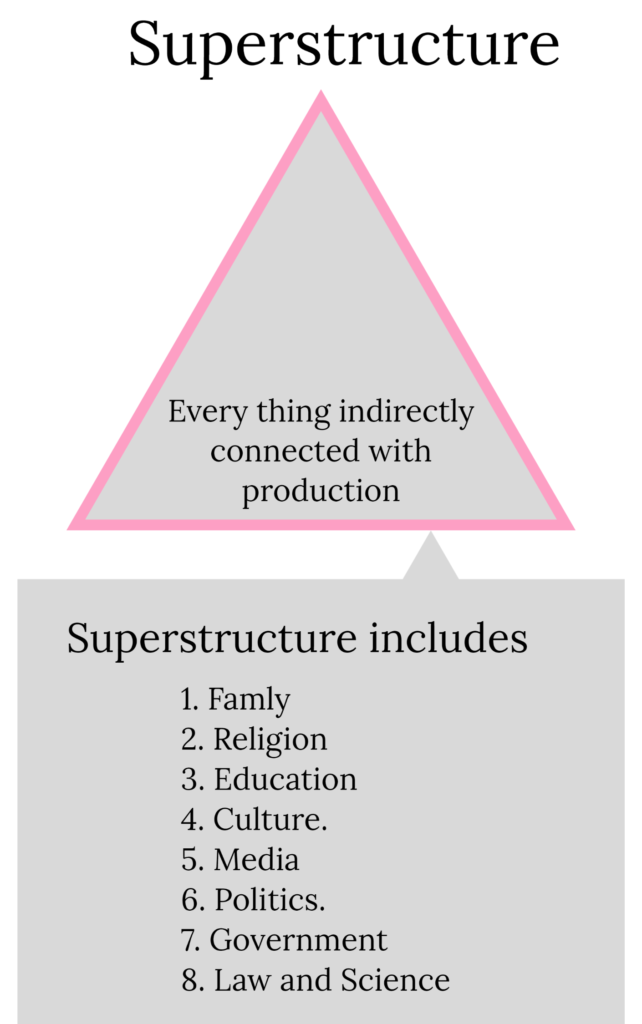Marxism is a school of thought founded by German philosopher, Karl Marx and the German sociologist, Friedrich Engels. The aim of marxism is to bring a classless society based on common ownership of the means of production, distribution, and exchange. It is not possible to explain superstructure without Base. According to Marxist theory, in a society, there will be a base and superstructure. In other words, base and superstructure are key concepts in marxism that offer a model for the structure of human societies. The Base and Super superstructure theory appeared in Marx’s ‘Preface’ to A Contribution to the Critique of Political Economy (1859).

The Base and superstructure are the two interrelated theoretical concepts developed by Karl Marx, Base refers to the means of production, the materials, and resources, that help to produce goods that society needs. Superstructure refers to all other aspects of society, like art, religion, law, Ideology, norms, and so on. Apart from this, the superstructure includes social, political, and government institutions. Marx argued that the superstructure always reflects the ruling class’ beliefs and interests.
The superstructure is the part of society that always legitimizes Base where the exploitation of the proletariat or working class. The base is occupied by the bourgeoisie. the Base consists of the elements like means of production (land. Factories, Raw materials, Machinery, etc.) and the relationship between the capitalist and working class. The bourgeoisie is capitalist and their interest shape and control politics, government, religion, family, norms, rules, etc. Therefore all elements that consist of culture are appropriate for the capitalist to establish their authority.
